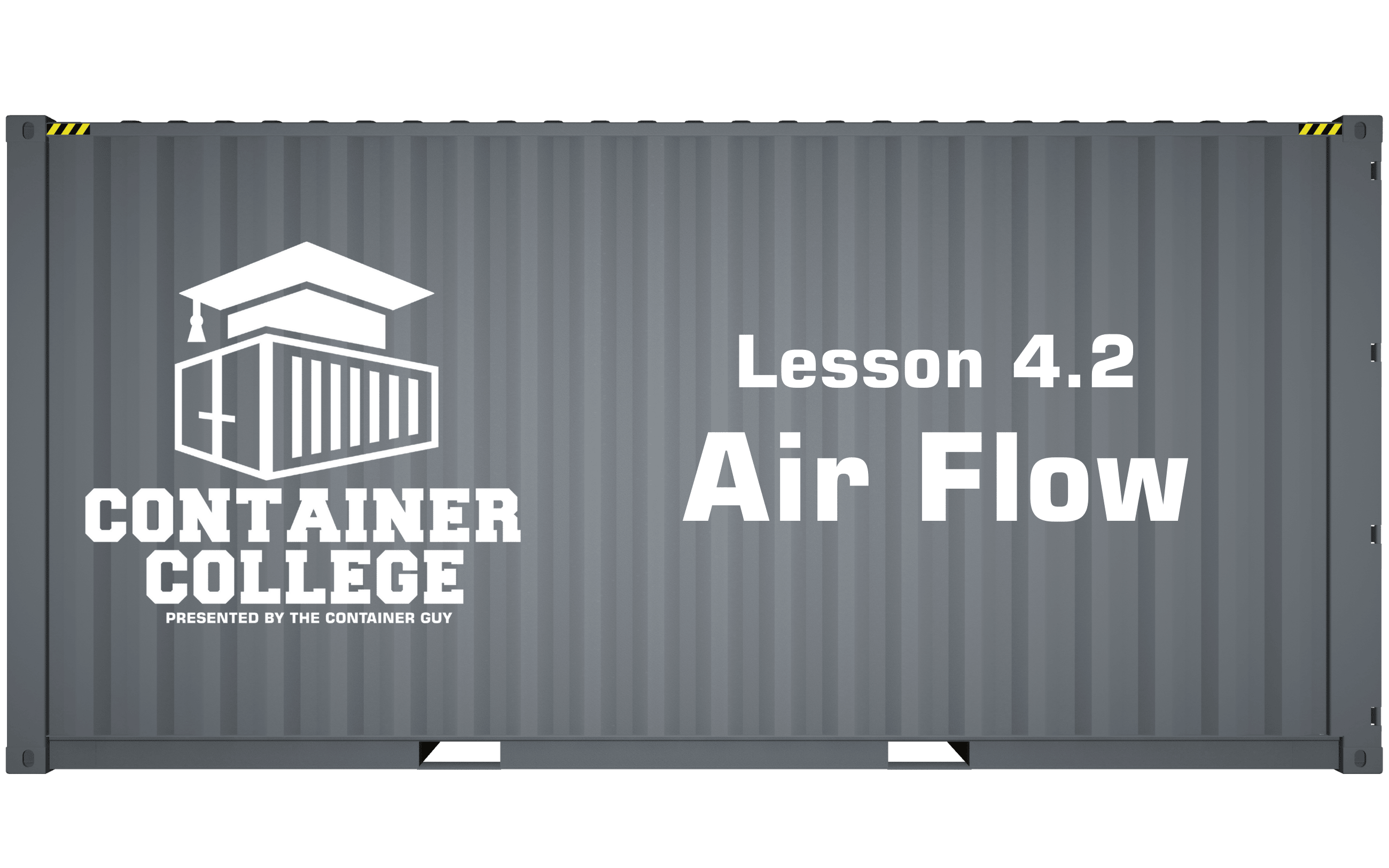
Ventilation Done Right: Choosing the Best CMW Vents for Your Container
If there’s one detail we stress in every modification project, it’s this: every shipping container needs more than one vent. Containers are built to be airtight, which is great for shipping freight across oceans, but terrible once you want to use them as storage, workshops, or living spaces. Without airflow, condensation forms, heat builds up, and air quality drops.
At The Container Guy, we rely on Container Modification World’s (CMW) line of vents because they’re designed specifically for the challenges that come with steel containers. Here’s a breakdown of their vent products and where they work best.
Passive Ventilation: Big Air Louvered Vents
Big Air 30
A small but mighty vent that’s easy to install and perfect for tight spaces. Don’t let its size fool you, it’s designed to deliver steady airflow while staying low-profile.
Use it when: You’re adding extra airflow to doors or smaller builds. Always install at least two for cross-ventilation.
Big Air 45
The industry favorite. The Big Air 45 is the most versatile vent in the lineup, with angled louvers that block rain and pests while still moving a significant amount of air. It’s the starting point for most container modifications.
Use it when: You’re building general storage, workshops, or utility containers. Two vents minimum is recommended: one high, one low—for effective air exchange.
Big Air 60
The largest of the louvered vents, the Big Air 60 is built for hot climates and larger conversions where condensation and heat buildup are major issues.
Use it when: You’re modifying containers into offices, habitable spaces, or using them in extreme temperatures. Install multiple units for maximum effect.
Check out our YouTube videos on the BigAir Passive Vents here and here.
Electrical Ventilation:
T10 Air Lift Vent
The T10 sits low on the wall and allows heavier-than-air gases, such as propane fumes, to safely escape. It’s not a standalone solution; you’ll want it paired with a higher vent to create the natural air cycle.
Use it when: You’re storing fuel or hazardous materials and need a passive, ground-level escape point.
Watch us install the T10 vent here.
BigAir Sky Light Roof Vent
The Skylight Roof Vent is a two-in-one solution that adds natural light while venting hot, moist air from the roofline. Its translucent cover brightens the container interior while releasing rising heat and condensation.
Use it when: You want both daylight and passive ventilation. Always pair with a sidewall vent (Big Air 45 or 60) for crossflow.
Watch us install the Sky Light Roof Vent here.
Solar-Powered Ventilation:
Big Air 57 Solar Vent
Powered by the sun, this vent actively pulls hot air out during the day without wiring or electricity. It works best when combined with at least one louvered vent, which lets cooler air flow in as the solar vent exhausts hot air out.
Use it when: You’re off-grid, building a recreational cabin, or need a low-maintenance airflow system.
Big Air 400 CFM Fan
When passive airflow isn’t enough, this solar-powered roof fan moves a serious volume of air, 400 cubic feet per minute. It’s designed for containers with constant heat or fume buildup. Like the solar vent, it should be paired with a louvered vent to bring in fresh air.
Use it when: You’re running a generator or mechanical enclosures, or need industrial-level ventilation.
Watch us install it here.
Why You Should Always Use Two or More Vents
One vent alone doesn’t create airflow; it just acts as an opening. To move air through a steel box, you need at least two vents working together, ideally placed on opposite sides or at different heights. This creates cross-ventilation, allowing fresh air in and stale or humid air out.
- Storage containers: Install at least two Big Air 45s.
- Workshops/offices: Use two Big Air 45s or 60s, paired with a solar vent for extra movement.
- Fuel storage: Combine a T10 low vent with a higher Big Air vent.
- Industrial builds: Pair the 400 CFM fan with multiple louvered vents for balanced intake and exhaust.
Final Thoughts
Ventilation isn’t optional; it’s the foundation of a healthy, functional container modification. Whether you’re keeping tools dry, storing propane, or creating a comfortable workspace, the right vent setup makes all the difference.



